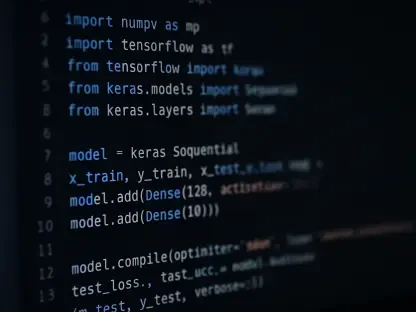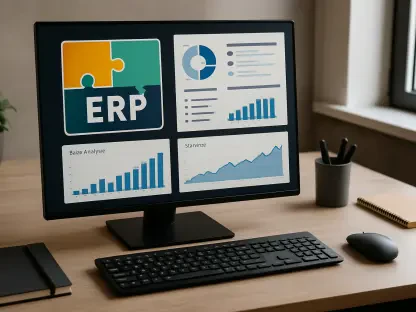Introduction
In today’s fast-evolving tech landscape, cloud migration stands as a critical challenge for developers and enterprises aiming to optimize performance and efficiency, with over 50 percent of compute shipped to major hyperscalers now being Arm-based. This significant shift highlights the urgency for tools that simplify the transition to Arm architecture, a platform known for its energy efficiency and scalability in cloud environments. The collaboration between Arm, a leader in semiconductor and software design, and GitHub, a cornerstone of software development, addresses this need through innovative AI-driven solutions. This FAQ article aims to answer key questions about their joint effort, focusing on a groundbreaking tool designed to streamline cloud migration. Readers can expect clear insights into how this partnership enhances developer workflows, tackles migration challenges, and supports the growing adoption of Arm-based infrastructure.
The scope of this content covers the specifics of the new tool, its impact on cloud development, and the broader implications for the industry. By addressing common queries, the goal is to provide actionable information for developers and organizations navigating hybrid cloud deployments. Each section breaks down complex concepts into digestible answers, ensuring clarity on how this collaboration shapes modern software development.
Key Questions
What Is the Cloud Migration Assistant Custom Agent?
The Cloud Migration Assistant Custom Agent represents a pioneering tool born from the partnership between Arm and GitHub, aimed at simplifying the migration of cloud workloads to Arm-based platforms. This solution, built on the robust framework of GitHub Copilot, integrates Arm’s deep expertise in architecture and toolchain capabilities. Its primary purpose is to automate and accelerate the often cumbersome process of transitioning software to Arm infrastructure, a task that traditionally involves numerous manual steps and technical hurdles.
This agent stands out by leveraging agentic AI, a type of artificial intelligence that performs context-aware, autonomous actions rather than just offering suggestions. It scans codebases for compatibility issues, identifies unsupported instructions, and provides tailored guidance to resolve portability challenges before migration even begins. For developers, this means less time spent troubleshooting and more focus on innovation.
Supporting this tool’s relevance is the industry’s rapid shift, with a significant portion of hyperscale cloud environments already relying on Arm-based systems for their efficiency. By addressing architectural readiness upfront, the Custom Agent ensures smoother transitions, making it an indispensable asset for developers targeting platforms like Microsoft Azure Cobalt 100 instances.
How Does Agentic AI Enhance Cloud Migration?
Agentic AI marks a transformative leap in software development by moving beyond passive assistance to active, intelligent intervention, and its role in the Cloud Migration Assistant is a prime example. Unlike traditional AI tools that merely suggest code snippets, agentic AI understands the context of a developer’s project, anticipates needs, and executes tasks autonomously. In the context of cloud migration, this capability translates to identifying potential issues in codebases and offering precise solutions tailored to Arm architecture.
The importance of this technology lies in its ability to reduce human error and save time during complex processes like hybrid cloud deployment. For instance, when migrating workloads, the agent can detect architectural mismatches and recommend optimizations, ensuring compatibility across both Arm and x86 targets. This level of automation addresses a critical pain point for developers managing multi-platform environments.
Industry trends further validate the growing reliance on such AI advancements, as automating repetitive tasks becomes essential in maintaining competitive development timelines. The integration of agentic AI with Arm-specific expertise in this tool exemplifies how intelligent systems can bridge technical gaps, empowering developers to focus on strategic goals rather than operational bottlenecks.
What Challenges Does the Tool Address for Developers?
Cloud migration often presents significant challenges, including architectural incompatibilities, unsupported instructions, and the complexities of multi-architecture container builds. The Cloud Migration Assistant Custom Agent tackles these issues head-on by providing a streamlined approach to identifying and resolving problems before they escalate. Its design specifically caters to the intricacies of transitioning to Arm-based systems, which can differ vastly from traditional x86 environments.
Beyond mere detection, the tool offers actionable insights, such as guiding developers through system-level optimizations for diverse cloud setups. This is particularly beneficial for those working in hybrid environments where maintaining consistency across platforms is a constant struggle. By automating these processes, the agent minimizes downtime and reduces the risk of migration failures.
The relevance of addressing these challenges cannot be overstated, especially as more enterprises adopt Arm infrastructure for its performance benefits. With nearly half of hyperscaler compute already on Arm, tools like this ensure developers are not left grappling with outdated methods, but instead are equipped to handle modern cloud demands efficiently.
How Does This Collaboration Support Multi-Platform Development?
Multi-platform development, a growing necessity in today’s cloud landscape, often requires balancing workloads across different architectures like Arm and x86, a task fraught with technical complexities. The partnership between Arm and GitHub directly supports this need through the Cloud Migration Assistant, which enables seamless multi-architecture container builds. This functionality allows developers to create and deploy applications across varied environments without needing extensive manual reconfiguration.
The tool’s ability to provide context-aware guidance during migration ensures that portability issues are addressed proactively. For example, it can highlight specific code segments that may not function as intended on Arm-based systems and suggest necessary adjustments. Such precision is invaluable for maintaining application performance in diverse setups.
This focus on multi-platform support aligns with the broader industry push toward flexibility in cloud computing. As organizations increasingly adopt hybrid models, having a tool that simplifies cross-architecture development becomes a game-changer, reducing both time and resource investment while enhancing overall productivity.
How Can Developers Access and Benefit from These Tools?
Accessibility remains a cornerstone of this collaboration, ensuring that developers of all levels can leverage the Cloud Migration Assistant Custom Agent and related resources. The tool is available through GitHub’s awesome-copilot repository, providing a straightforward entry point for those interested in exploring its capabilities. Additionally, a beta program for the Arm MCP Server offers access to real engineering tools and performance libraries integrated into AI workflows.
Beyond direct access, comprehensive support is provided through platforms like developer.arm.com and the Arm Cloud Migration Program. These resources include educational materials and expert guidance, catering to both individual coders and large enterprises looking to optimize their cloud strategies. Such inclusivity ensures that the benefits of AI-driven migration are not limited to a select few.
The impact of this accessibility is profound, as it democratizes advanced technology, allowing developers to capitalize on Arm’s efficiency gains without needing specialized knowledge. By joining beta programs or utilizing available documentation, users can stay ahead in a competitive field, adopting cutting-edge solutions with ease.
Summary
The partnership between Arm and GitHub, through the Cloud Migration Assistant Custom Agent, delivers a powerful solution for AI-driven cloud migration, addressing critical developer challenges. Key points include the tool’s use of agentic AI to automate compatibility checks and provide context-aware guidance, its support for multi-platform development, and its focus on simplifying hybrid cloud deployments. The growing dominance of Arm-based infrastructure in hyperscale environments further underscores the timeliness of this innovation.
Main takeaways highlight how the agent enhances productivity by reducing migration risks and streamlining complex processes. Its accessibility via GitHub repositories and beta programs ensures that developers across various scales can adopt these advancements. The collaboration sets a new standard for intelligent automation in software development, aligning with industry trends toward efficiency and scalability.
For those seeking deeper exploration, resources on developer.arm.com and participation in the Arm Cloud Migration Program offer valuable opportunities to expand knowledge. Engaging with the beta for the Arm MCP Server can also provide hands-on experience with integrating performance libraries into AI workflows. These avenues empower users to fully harness the potential of Arm-based cloud solutions.
Final Thoughts
Reflecting on this collaboration, it becomes evident that Arm and GitHub have forged a path that redefines cloud migration through intelligent automation. Their joint effort not only tackles immediate technical barriers but also paves the way for sustained innovation in software development. The introduction of agentic AI into practical tools marks a turning point for developers who have long struggled with the intricacies of multi-architecture environments.
Looking ahead, developers are encouraged to explore how these tools can transform their specific projects or organizational goals. Taking the next step by accessing the Cloud Migration Assistant or joining related programs could unlock significant efficiency gains. This is a moment to consider integrating such solutions into existing workflows, ensuring readiness for the evolving demands of cloud computing.
Ultimately, the impact of this partnership extends beyond a single tool, inspiring a broader shift toward smarter, architecture-aware development practices. Developers have the chance to experiment with these resources, tailoring them to unique challenges and contributing to a more adaptive, AI-centric future in technology. This initiative stands as a foundation for continued growth, urging all to stay engaged with emerging possibilities.









